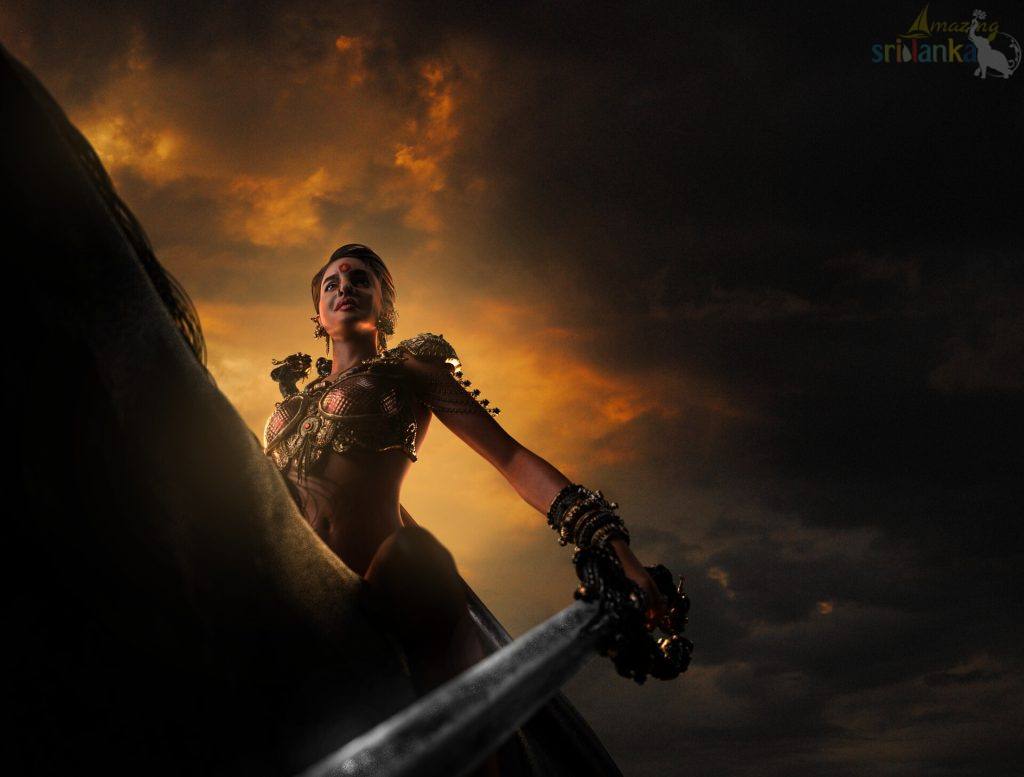Goddess or Demoness?

Meet Lilith and Kuweni; the ‘wronged’ women
By Ama H.Vanniarachchy
At present we live in a patriarchal society. Our norms, ethics, customs, and our culture as a whole, are generally based on patriarchal ideologies. Our social, economic, and political systems are based on patriarchal ideologies. But there are some societies that are matriarchal. Anthropologists and historians assume that in the past there have been more matriarchal societies than we have today. There is a hypothesis that most of the early past civilizations were predominantly matriarchal.
Scholars are still figuring out to find answers to know when exactly the paradigm shift occurred, and when and how matriarchy changed into patriarchy. Although controversial and still not proven, scholars based on scattered evidence, assume that the patriarchal society we live in today was built on the remnants of a matriarchal society, where the women of the family, or the mother, played a lead role in every aspect of the society.
One of the strongest pieces of evidence scholars present to support this hypothesis is the goddess concept or the veneration of the mother goddess which was a major powerful cult in past societies.
Goddess to God…
However, as this hypothetical paradigm shift occurred, this one powerful goddess concept eventually was converted into one powerful god concept. The mother goddess cult believed that the mother goddess or one super feminine divine power created and took care of the world. As this paradigm shift happened, this divine power was shifted to a male god; a father figure. Deliberate efforts were taken to erase the divinity of mother goddess cults.
As matriarchy shrank, limiting it only to very few societies, patriarchy dominated every aspect of our society. Some of the earliest societies, which are known today as primitive, are still matriarchy; or a combination of the both. Many of our beliefs that are older than organized religions, clearly show matriarchy ideologies and the evidence of a once lost goddess cult.
Goddess or Demoness?
When the history of mankind was written, mainly by male writers who were priests, it was written as the story of ‘men’, not of women. Women’s history was not so important. Therefore women were always kept behind the veil. They were not allowed to shine. They were shunned.
These males decided and made social norms, ethics, policies, laws, and religions. Most of the organized religions we have today were created by males for the benefit of males. Women were always ordered to be covered, keep quiet, be submissive, to do as told, not to be educated, and not be freed. Hence, the rise of these organized religions and the cultures based on them always controlled women and considered them as merely living beings without feelings or rights.
The Dark Women; the Independent one
Today, in a society where we openly talk about feminism and women’s rights and liberation, we re-examine these historical texts. We attempt to rewrite the history of women, trying to look at the past from a female’s perspective.
When doing so, among the many women of the past, there are two significant figures we cannot ignore. They are Lilith from the Middle East and Kuweni from Sri Lanka.
Both were women who lived ahead of their times. Both were strong independent women, who were ‘punished’ and ‘banished’ by their contemporary society and as well as from history. Still, these women are shunned and portrayed as demonesses.
But why? Were they actually men-eating demonesses? Or were they the wronged women, who chose to stand against unjust, instead of giving in to all unjust? Who were they? What crimes did they commit? And why are these two women admired by today’s feminists?
How do Lilith and Kuweni remind us about the lost goddess cult and take us back to a forgotten matriarchal past?
Who were they?
According to historical texts and historians, the historical existence of Lilith and Kuweni is uncertain. Lilith is known as the first wife of Adam. She was created from the same soil that was used to create Adam; therefore she was equal to Adam, unlike Eve. Lilith refused to be submissive to Adam when he was forcing himself on her. She rejects and refuses to be treated merely as an object. Adam complains to his creator, saying the woman he gave Adam is not obedient. She leaves paradise.
Her punishment for not coming back to Adam and not being obedient was that her children will be killed. In return, she said she will take revenge back. From this point onwards, Lilith was known as a demoness who hunts babies and children. Lilith found a new companion who considered her his equal. Therefore she was known as a seductress; an unfaithful woman. On the other hand, Eve, who was obedient, quiet, and submissive was portrayed as the ideal woman.
Kuweni, a tribal princess, betrayed her own people to make Vijaya king of Thambapanni (Sri Lanka). Vijaya, after becoming king, decides to marry a princess of his own country. By this time, Kuweni had borne two children. Vijaya ordered her to leave the palace, without her children. Refusing to leave her children, Kuweni takes them along with her but does not accept the injustice. She cries, and pleads. But her cries were not heard by her husband. She leaves but curses. She cursed to take revenge, not only from Vijaya but from his entire descendants. She was not welcomed by her own tribe as she once betrayed them. She was killed by one of her own uncles. Henceforth she is portrayed as a demoness, who would scare Vijaya’s descendants by appearing in their dreams as a fearsome gruesome she-leopard, with a glass tongue. Kuweni has always been portrayed as a dark-skinned, fearsome demoness. However, at the time she first met Vijaya and married him, the text portrays her as a beautiful damsel; young and enchanting. The moment she refuses to be mistreated, and the moment she speaks out against unjust, she becomes a demoness.
Past, present, and future; it’s the same woman…
These two stories bear uncanny similarities. They may not be historical characters. Or, they are created inspired by historical characters. However, what these two stories tell us is more important than being bothered if they were historical characters or not.
Even though they are mythological characters, what they reveal is what contemporary society believed and practiced.
Both chose to live life on their own terms. They refused to be misused or controlled by others. When Lilith’s punishment was that her children would be killed, she vowed to take revenge. When Kuweni was asked to leave, but not take her children, she took her children with her but vowed to take revenge. Both were first wives who were ‘decided’ to be thrown out for choosing to be human beings, rather than submissive slaves. Lilith and Kuweni both are at one point described as seductresses.
These traits clearly depict patriarchal ideologies and echo in our society to date. Those who choose to be ‘themselves’, free human beings, non-submissive, strong and independent, those who refuse to be veiled, are usually portrayed and seen as ‘vulgar’, ‘unfeminine’, ‘arrogant’, and ‘rough’. Even today, since the known history, women who chose to be free about their sexuality are known as ‘difficult’.
Goddess or Demoness; who is the ideal woman?
Women like Lilith and Kuweni, who are veiled in history, trace back their origins to an unknown past, which, hypothetically could be a matriarchy.
The Mother Goddess and other goddesses in the Goddess concept are not soft and fragile. These goddesses are not fair-skinned or well-dressed beauties. These goddesses are portrayed sometimes as strong, fierce, large women. None of these goddesses are portrayed as ‘women’ we expect to see based on today’s beauty standards. Their attributed traits are also fearsome, protective, compassionate, sympathetic, strong, and warrior-like.
As this hypothetical paradigm shift happened, and as organized religions (revolving around a mighty male god) rose to power the ‘real woman’ ideologies were revised. The new ‘ideal woman’ was created by male priests. She was eye-candy to men. She was fair-skinned, always well dressed, soft, delicate, gentle, and always had a male partner, and in most cases had children. This religious depiction, symbolically reveals what society expected women to be.
Let them live
These historical and religious tales symbolically tell us that women are not inferior to men. It was that women were forced to be submissive. Both men and women are equal. Through patriarchal religious and cultural norms, women are forced to be veiled and shunned.
These organized religions consider women’s bodies to be impure and cursed. This is because the male priests who created them, were afraid of the feelings that aroused in the minds of themselves, seeing women. Instead of being ashamed of their own feelings, they envied women. They feared women. This fear, they converted into hatred. It is this hatred that is echoed in religious texts. It is the male ego that echoes in these texts.
Women are not eye-candy objects to please the male’s vision. A goddess or an ideal woman is a woman who chooses to be herself, who chooses to be independent and strong. An ideal woman is not someone always dolled up; an ideal woman, may it be goddess, or demoness in the eyes of the man, is a woman who stands against injustice.
Uncategorized, feminism, Feminist approach to archaeology, goddess concept, kuweni, lilith
